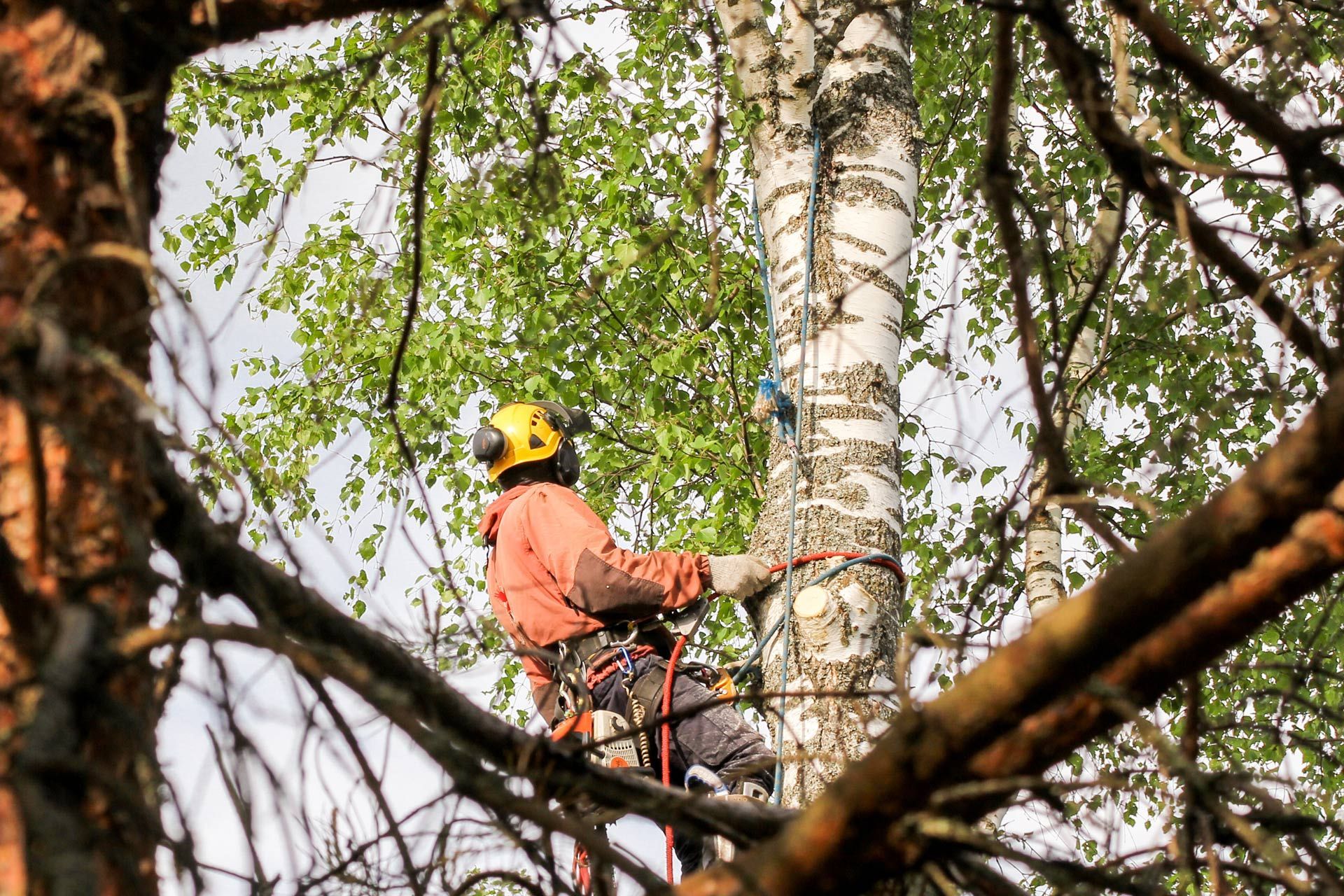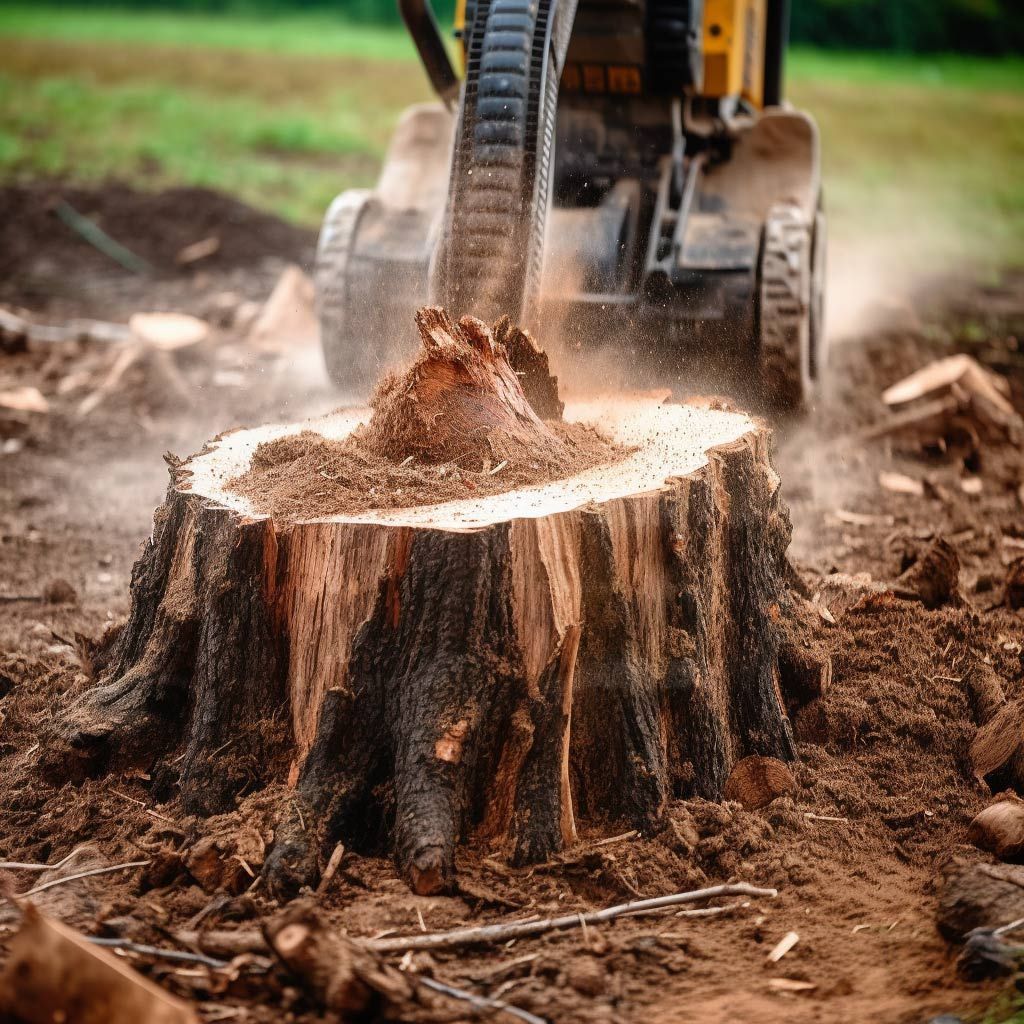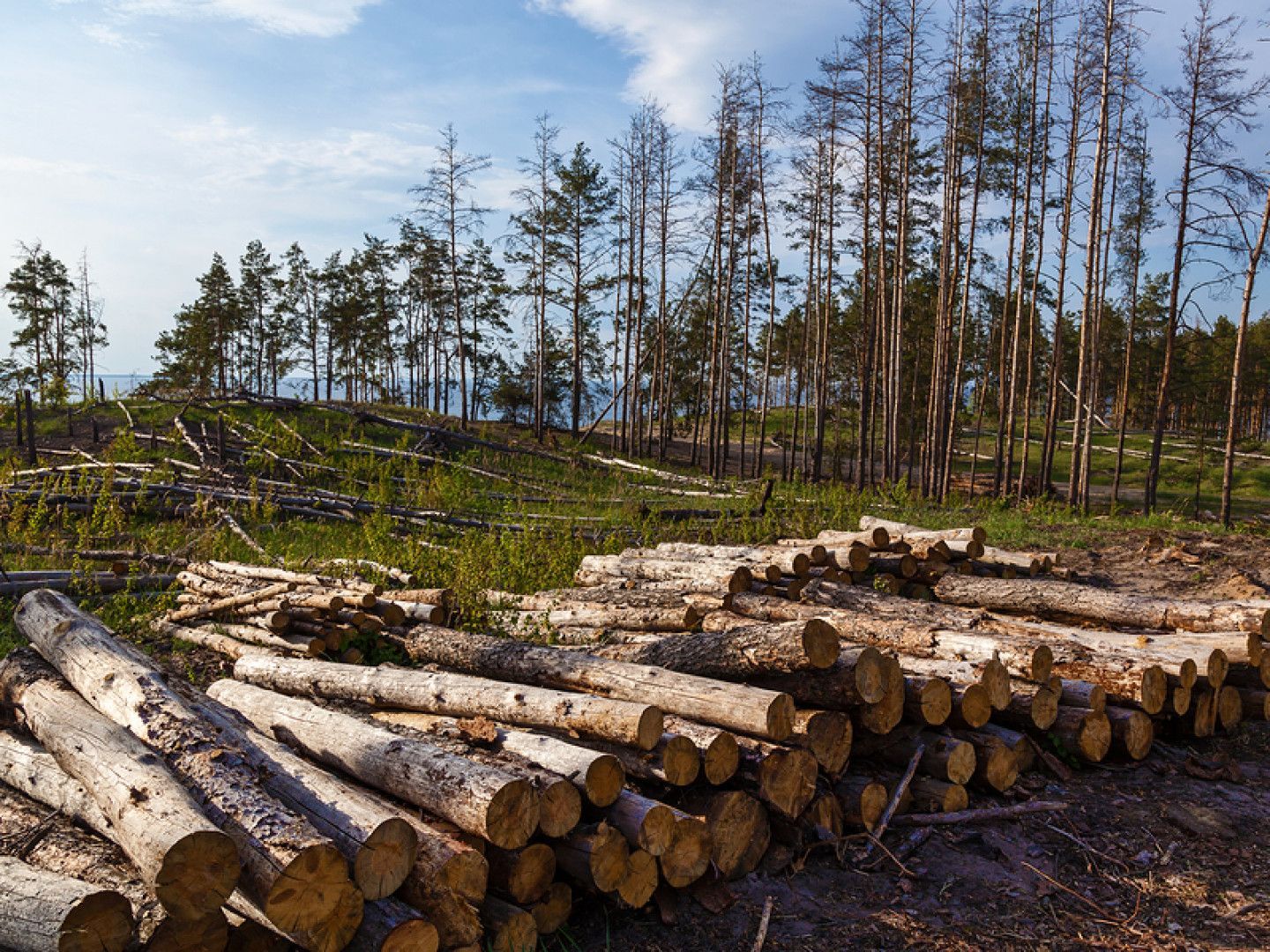Call Us: 440-251-9436
Call Us: 440-251-9436
All-in-One Tree Services in Northeast Ohio
Comprehensive Tree Maintenance Services Across Northeast Ohio

Welcome to our in-depth guide on tree care services available in Northeast Ohio. Here, we explore essential topics such as tree removal, trimming, stump grinding, and lot clearing, tailored specifically for residents of Solon, Warren, Chagrin Falls, and West Farmington, OH.
Whether you need to remove a hazardous tree, maintain tree health, or prepare a lot for construction, this guide provides the insights you need. Learn about the processes, benefits, and considerations of professional tree care to enhance the safety and beauty of your landscape. Let’s delve into how expert services can transform your outdoor space.

Tree Removal
What is Tree Removal?
Tree removal involves the complete extraction of a tree from its location. This service is typically required when a tree becomes a safety hazard, interferes with landscaping plans, or becomes unhealthy and irreparable. Removing a tree can help prevent property damage from falling limbs or unstable trees that might topple over during storms.
When to Remove a Tree
It’s important to recognize the signs that a tree needs to be removed to maintain safety and the health of your landscape. Here are the key indicators:
- Dead or Dying Trees: Lack of leaf production, brittle branches, and decay are tell-tale signs.
- Diseased Trees: Signs include unusual leaf discoloration, fungal growth, and peeling bark.
- Damage: Severe weather or accidental impacts can irreparably damage a tree’s structure.
- Hazardous Location: Trees too close to homes, power lines, or other structures may need removal.
The Tree Removal Process
Understanding the tree removal process can help you know what to expect when it's time to remove a tree. Here’s a general step-by-step guide:
- Assessment: A professional arborist will inspect the tree and its surroundings to determine the best removal method.
- Preparation: The area around the tree will be cleared, and safety measures will be put in place.
- Cutting: Strategic cuts will be made to control the direction of the tree’s fall.
- Removal: The tree is brought down, and debris is removed from the site.
- Cleanup: The area is cleaned up to remove all traces of the removal process.
Safety Considerations During Tree Removal
Safety is our number one priority during tree removal. Here are some precautions:
- Professional Help: Always use certified professionals for tree removal to ensure safety and efficiency.
- Clear Area: Ensure that all people and pets are a safe distance away from the tree removal area.
- Proper Equipment: Professionals should use the appropriate safety gear and equipment.
Tree Removal Cost Factors
Several factors influence the cost of tree removal, including:
- Tree Size: Larger trees require more labor and equipment, increasing costs.
- Tree Condition: Diseased, dying, or hazardous trees might complicate removal, affecting the price.
- Accessibility: Trees that are hard to reach can be more expensive to remove due to additional labor and equipment.
Frequently Asked Questions About Tree Removal
-
How long does it take to remove a tree?
The time required to remove a tree can vary significantly based on its size, type, location, and the complexity of the job. Smaller trees might be removed in a few hours, while larger trees can take a full day or more.
-
Is it necessary to get a permit for tree removal?
In many areas, a permit is required to remove a tree, especially if it's large or located near public property. It's important to check with your local city or municipal planning department to understand the specific regulations and obtain the necessary permits before proceeding.
-
What is the best time of year for tree removal?
The best time for tree removal is during the dormant season, from late fall to early spring. During this period, trees are less active metabolically, which minimizes stress. Also, the absence of leaves can make the process quicker and cleaner.
-
Can I remove a tree myself?
Removing a tree by yourself is not recommended unless it is small and in a safe area away from structures and power lines. For larger or more complex situations, it's safer and more efficient to hire professional arborists. They have the necessary skills, experience, and equipment to remove trees safely.
-
What happens to the tree after it’s removed?
After a tree is removed, the wood can be chopped for firewood, chipped into mulch for gardens, or hauled away by the tree service company for disposal. If you wish to keep any of the wood or have specific plans for it, you should discuss this with the service provider beforehand.

Tree Trimming
What is Tree Trimming?
Tree trimming involves selectively cutting branches and leaves to enhance a tree’s health and aesthetics. This process helps prevent potential hazards and promotes healthy growth by removing overgrown or dead branches.
When to Trim Your Trees
Optimal times for trimming depend on the tree species and the goal of trimming. Generally, the best time is during the dormant season, from late fall to early spring, to minimize stress on the tree and prevent the spread of diseases.
How is Tree Trimming Done
Professionals typically follow these steps:
- Inspection: Assessing the tree’s health and identifying which branches need trimming.
- Planning: Determining the best method to minimize harm to the tree.
- Execution: Using tools like pruners and saws, carefully cutting branches to avoid damage.
- Cleanup: Collecting and disposing of all debris, leaving your property tidy.
Benefits of Tree Trimming
- Improves Health: Removes dead or diseased limbs to prevent further decay.
- Enhances Appearance: Shapes the tree to enhance your landscape’s look.
- Safety: Reduces the risk of branch falls that could damage property or cause injuries.
- Promotes Growth: Encourages the development of stronger, healthier branches.
Tree Trimming Cost Factors
Costs can vary based on:
- Tree Size and Species: Larger and more complex trees require more effort and time.
- Tree Condition: Diseased or damaged trees might need more delicate handling.
- Accessibility: Easy-to-reach trees cost less to trim than those near buildings or power lines.
Frequently Asked Questions About Tree Trimming
-
How often should trees be trimmed?
The frequency of tree trimming depends on the species and the purpose of trimming. Generally, it's recommended to trim trees every 1-3 years. Fast-growing species may require more frequent trimming to maintain shape and health.
-
Can I trim a tree any time of the year?
While you can technically trim a tree at any time, it's best to do it during the dormant season (late fall to early spring) to minimize stress and prevent disease. Avoid trimming during extreme weather conditions to ensure the health of the tree.
-
What tools are used for tree trimming?
Professional arborists use a variety of tools, including pruning shears, loppers, pruning saws, and sometimes chainsaws for larger branches. Safety equipment like gloves, goggles, and harnesses are also essential to protect against injuries.
-
Should all trees be trimmed the same way?
No, different tree species require different trimming techniques based on their growth patterns and health needs. It's important to understand the specific requirements of each tree species to effectively promote their health and appearance.
-
What should I do with the trimmed branches?
Trimmed branches can be repurposed as mulch for garden beds, converted into wood chips for landscaping, or responsibly disposed of through city green waste programs. Some people also use them for creative projects or firewood.

Stump Grinding
What is Stump Grinding?
Stump grinding is a method used to remove tree stumps after the tree has been cut down. This process involves a machine that grinds the stump down into wood chips, which can then be used as mulch or disposed of.
Why Remove Stumps
Leaving stumps in your yard can lead to problems such as:
- Safety Hazards: Stumps are tripping risks and can damage lawn equipment.
- Pest Attraction: Decaying stumps attract insects, which can migrate to healthy plants.
- Aesthetic Concerns: Stumps can detract from the overall look of your landscaping.
Stump Grinding vs Stump Removal
While stump grinding involves shredding the stump into mulch, stump removal entails extracting the stump along with its root system. Stump grinding is less invasive and more cost-effective, while stump removal is more thorough but also more disruptive and expensive.
Stump Grinding Process
The process usually follows these steps:
- Site Preparation: Clearing stones and debris around the stump to prevent equipment damage.
- Grinding: Using a stump grinder to shred the stump into wood chips.
- Depth: Grinding can go 6 to 12 inches below ground level to ensure no regrowth.
- Cleanup: Removing the wood chips or spreading them in the area as mulch.
When to Grind a Stump
Consider grinding a stump if:
- Immediate Land Use: You need to clear the area for replanting or construction.
- Safety and Aesthetics: The stump poses safety risks or is an eyesore.
- Pest Prevention: To prevent pests from settling in the decaying wood.
Frequently Asked Questions About Stump Grinding
-
How deep does the grinder go?
A stump grinder typically grinds down to a depth of 6 to 12 inches below the ground level. This depth ensures that the majority of the stump and root system is removed to prevent regrowth, although specific depths can be adjusted based on landscaping plans or individual needs.
-
Can stump grindings be used for anything?
Yes, stump grindings can be repurposed effectively. They are often used as mulch around gardens to help retain soil moisture and regulate temperature. Grindings can also be used to fill the hole left by the stump or added to compost piles.
-
How long does stump grinding take?
The duration of stump grinding can vary depending on the size and type of the stump and the equipment used. Small stumps can typically be ground down in about 30 minutes, while larger stumps might take a couple of hours.
-
Is stump grinding safe for nearby plants?
Stump grinding is generally safe for nearby plants. Care is taken to ensure that the grinding does not extend into the root zones of nearby healthy plants. However, it's important to inform the service provider about any particular concerns regarding nearby vegetation to avoid damage.
-
What happens if a stump is not ground down?
If a stump is not removed or ground down, it can lead to several issues. It might become a habitat for pests like termites and ants, potentially posing a risk to other trees and structures nearby. It can also be an eyesore and a tripping hazard, and it may obstruct new landscaping efforts.

Lot Clearing
What is Lot Clearing?
Lot clearing involves removing trees, stumps, brush, and other debris from a piece of land. This process prepares the site for new construction, landscaping, or agricultural use.
Types of Lot Clearing
There are several types of lot clearing based on the purpose and extent of clearing required:
- Brush Removal: Eliminates undergrowth, small bushes, and debris to reduce fire hazards or improve aesthetics.
- Selective Clearing: Carefully removes specific trees and vegetation to preserve the natural environment while making land usable.
- Complete Clearing: Removes all vegetation and obstacles from the land, typically for construction projects.
When to Hire a Professional Lot Clearing Service
Consider professional lot clearing when:
- Large Scale Projects: The size or complexity of the project requires heavy machinery and specialized skills.
- Regulatory Compliance: Local regulations may dictate specific methods or permits for clearing land.
- Safety Concerns: Professional services ensure that clearing is done safely, preventing harm to people and property.
The Lot Clearing Process
The process usually includes:
- Planning and Permits: Obtaining necessary permits and creating a detailed plan for the clearing.
- Equipment Setup: Bringing in the appropriate machinery, such as bulldozers, backhoes, and chainsaws.
- Clearing: Methodically removing trees, stumps, and underbrush.
- Disposal: Responsibly disposing of or repurposing removed vegetation.
- Site Preparation: Final grading and preparation for the next stage of development.
Cost Factors for Lot Clearing
Costs can be influenced by several factors:
- Size of the Lot: Larger plots require more time and resources to clear.
- Density of Vegetation: Heavily wooded or overgrown lots are more labor-intensive and costly to clear.
- Accessibility: Difficulty accessing the lot can increase the time and machinery needed, impacting costs.
Frequently Asked Questions About Lot Clearing
-
What should I check before clearing a lot?
Before clearing a lot, it’s crucial to check for any local regulations and zoning laws that may affect clearing activities. Obtain necessary permits, survey the land for any protected species or habitats, and consider having a professional assess the lot to identify any potential issues such as soil stability or drainage concerns.
-
How do I choose the right lot clearing service?
Select a lot clearing service based on their credentials, experience, and reputation. Look for services that have good reviews, proper licensing, and insurance. It’s also wise to get multiple quotes and ask for references from past projects similar to yours.
-
Can lot clearing affect local wildlife?
Yes, lot clearing can significantly impact local wildlife by removing habitats and food sources. It’s important to plan clearing activities during non-breeding seasons if possible and to implement measures that protect wildlife, such as creating buffer zones or relocating certain species if necessary.
-
What are the environmental considerations of lot clearing?
Environmental considerations include preventing soil erosion, protecting water quality, and preserving native vegetation as much as possible. Using sustainable practices such as selective clearing and responsible disposal of vegetation can help minimize environmental impact.
-
How long does lot clearing typically take?
The duration of lot clearing depends on the lot size, the amount and type of vegetation, and the method of clearing used. Simple projects might take a few days, while more extensive clearing on large or densely wooded lots could take several weeks.
Choosing the Right Tree Service Company
When selecting a tree service company, consider the following tips to ensure you choose a reliable and effective provider:
- Credentials: Look for companies with certified arborists and a valid license to operate in your area.
- Insurance: Ensure the company carries both liability and worker’s compensation insurance to protect your property and their employees.
- Experience: Check for experience particularly in the services you need. More years in the business usually means better expertise and reliability.
- Reputation: Read reviews and ask for references to gauge the satisfaction of past customers.
- Estimates: Get detailed written estimates from multiple companies to compare prices and understand the scope of the work.
- Safety Standards: Confirm that the company adheres to the industry safety standards to prevent accidents and ensure a thorough job.
Troyer's Tree Service: Your Trusted Partner in Tree Care
For residents of West Farmington, Solon, Warren, and Chagrin Falls, OH, choosing the right tree care provider is crucial. Troyer's Tree Service offers comprehensive solutions with a focus on quality and reliability. Our services include:
- Tree Removal: Safely remove hazardous or unwanted trees.
- Tree Trimming: Enhance the health and aesthetics of your trees.
- Stump Grinding: Efficiently remove unsightly stumps from your property.
- Lot Clearing: Prepare your land for new construction or restoration.
At Troyer's Tree Service, we combine expertise, professionalism, and commitment to customer satisfaction to provide superior tree care services tailored to your needs.
Ready to Give Your Trees the TLC They Deserve?
Don't let tree problems grow out of control. Contact Troyer's Tree Service today to ensure your landscape remains beautiful and safe. Whether you need emergency tree removal, routine trimming, or comprehensive lot clearing, we are here to help. Call us now to schedule your service and experience the best in professional tree care!
Our Services
Tips & Articles
Contact Information
Phone:
440-251-9436
Address:
5895 State Route 534, West Farmington, OH 44491, United States of America
Area We Serve
All Rights Reserved | Troyers Tree Service
